
In the vast expanse of the digital realm, standing out can be a challenge. Enter Google Ads, a beacon for businesses aiming to shine brightly amidst the noise. Originally known as AdWords, Google Ads is Google's online advertising platform. It's the bridge that connects businesses to potential customers precisely when they're actively searching for products or services.
Through Google Ads, advertisements can appear on Google's search results, partner sites, and even within YouTube videos. With its pay-per-click (PPC) model, businesses only pay when someone clicks on their ad, making it a cost-effective approach to digital marketing. The platform's robust analytics tools further enable advertisers to track and measure the impact of their campaigns in real time. For those seeking visibility in an online-centric world, Google Ads is akin to a lighthouse, guiding prospects to your shores.
Google Ads, once known as AdWords, is the search giant's advertising service. Think of it as the fast-track lane on the information superhighway. Instead of waiting for organic search results to bring visitors to your website, Google Ads propels you right to the front.
How does it work? Advertisers bid on certain keywords for their clickable ads to appear in Google's search results. When users search for terms related to those keywords, the ads might appear above the organic search results, offering prime digital real estate for businesses aiming to increase visibility. This is especially powerful given the vast number of searches on Google daily.
Google Ads operates on a pay-per-click (PPC) model, which means advertisers only part with their cash when someone clicks on their ad. It's a win-win! Advertisers get increased visibility and potential leads, while only paying for actual interactions.
But it's not just about search results. Google Ads allows for placements on a range of platforms: Google search results, partner sites, YouTube, and even within mobile apps. Through Google Ads, businesses can reach audiences wherever they are in the vast digital landscape.
In essence, Google Ads is a tool for businesses wanting to be seen, providing a spotlight in the crowded digital arena.
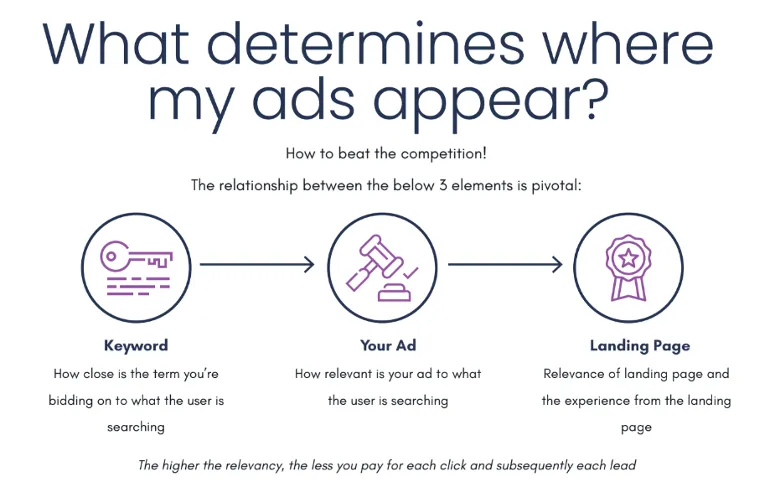
Google Ads is like a digital billboard in the heart of a bustling digital city. At its core, it's a platform where businesses pay to have their ads displayed across Google's vast network. Here's a simple breakdown:

In a nutshell, Google Ads offers a powerful, flexible toolset for businesses to reach their desired audience, ensuring each penny spent is a step toward a potential customer.
In today's digital-driven world, being visible online isn't just beneficial; it's essential. Google Ads holds a prominent place in the online marketing toolkit, and here's why:
In essence, Google Ads remains a cornerstone of online advertising. Its relevance is solidified by its adaptability, precision, and expansive reach in the ever-evolving digital landscape.
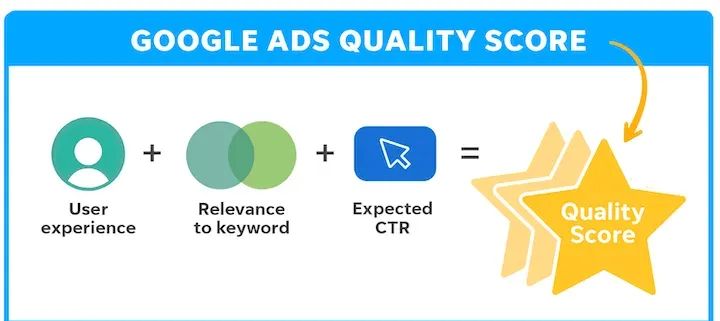
Navigating the vast landscape of Google Ads can feel like venturing into uncharted waters, especially when trying to gauge the effectiveness of your campaigns against others. Every industry, from e-commerce to real estate, has its unique benchmarks. These industry averages, including metrics like click-through rate (high CTR), Cost-per-click (CPC), and best conversion rate, offer advertisers a comparative snapshot. Knowing these averages helps businesses set realistic goals, allocate budgets wisely, and fine-tune strategies for better performance. In this section, we'll unravel the typical benchmarks across various industries, enabling you to position your campaigns for success.
Click-through rate, often abbreviated as high CTR, is a metric that represents the percentage of users who click on an ad after seeing it. Essentially, it's the ratio of ad clicks to ad impressions. A high CTR indicates that your ad is relevant and appealing to your audience.
It's a clear signal that your headline, keywords, and ad copy resonate with viewers. For businesses, achieving a high CTR means not only that the audience is interested but also that the ad's placement is effective. Monitoring and improving your CTR can lead to high CTR scores and potentially lower costs on Google Ads.
The best conversion rate in Google Ads refers to the percentage of visitors who take a desired action after clicking on your ad. This action could range from making a purchase, signing up for a newsletter, or any other predefined goal. It's a crucial metric because it directly reflects the ROI of your ad spend.
The best conversion rate signifies that your ad messaging aligns well with your landing page offer, leading to more successful outcomes. To boost the best conversion rate, advertisers should ensure consistent messaging, user-friendly landing page design, and a clear call to action.
Cost per click, or CPC, is the amount an advertiser pays each time someone clicks on their ad. This metric is vital for budgeting and understanding the financial efficiency of your ad campaigns. Factors influencing CPC include the competitiveness of keywords, Quality Score, and bidding strategy. It's essential to strike a balance between competitive bidding and budget constraints.
A lower CPC is generally desired, as it means you're achieving more clicks for less spend. However, the focus shouldn't just be on minimizing CPC but ensuring it aligns with campaign objectives and brings valuable traffic that's likely to convert.
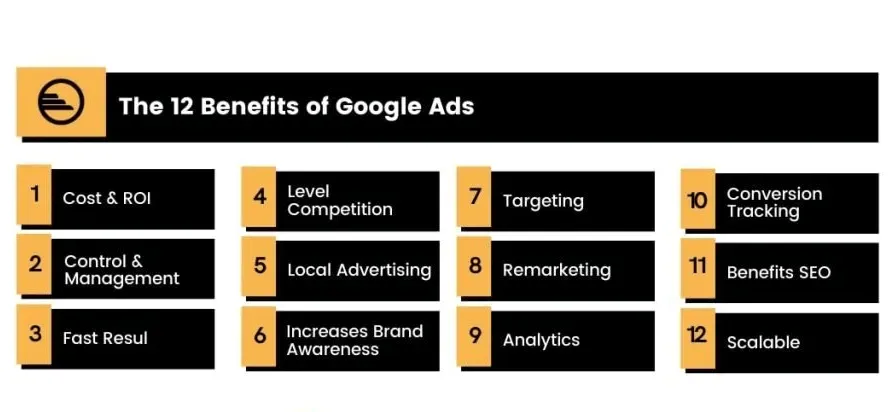
In the vast universe of digital marketing, Google Ads stands out as a powerful tool, offering a plethora of advantages to businesses of all sizes. If you're on the fence about integrating Google Ads into your marketing strategy, here's a breakdown of its top benefits:
In conclusion, Google Ads offers a unique blend of advantages that can be tailored to meet diverse marketing objectives. It's an investment that, when managed correctly, can yield substantial returns, driving both online and offline business goals.
Crafting an impeccable Google Ads campaign is akin to preparing a gourmet dish; every ingredient must be carefully chosen and measured. Here's a recipe for a flawless campaign:
Understand Your Audience: Before you dive in, take a moment to understand who you're targeting. Are they tech-savvy millennials, busy parents, or retirees? Each audience has unique behaviors and preferences.
Remember, a well-crafted Google Ads campaign can dramatically boost online visibility and drive conversions. As any chef knows, it's all about experimenting, adjusting, and refining until you achieve perfection.
Delving into Google Ads without keyword research is like setting sail without a map. Google's Keyword Planner is your guiding star. Selecting the right keywords is vital; they should resonate with what your potential customers are actively searching for. Aim for a mix of generic and long-tail keywords. Assess their search volume, competition, and relevance. This ensures your ads appear to the right audience, increasing chances of conversions and maximizing ROI.
An ad copy is the frontline of your Google Ads campaign. It's the brief message that needs to make the most impact. Always keep it relevant to the searcher's intent. Be succinct yet enticing, highlighting the unique value your product or service offers. Incorporate a compelling call to action, urging the user to click. Lastly, maintain consistency between your ad copy and the landing page, ensuring the user finds what they're promised.
Imagine Google Ads as a basic sandwich; extensions are the extra toppings that elevate it. They give more context to your ads, enhancing user experience. From location details to direct call buttons, extensions enrich your ad, offering users more avenues to interact. By incorporating varied extensions, you cater to different user inclinations, maximizing the chances of engagement and clicks. Always ensure the extensions used are relevant to the ad's purpose.
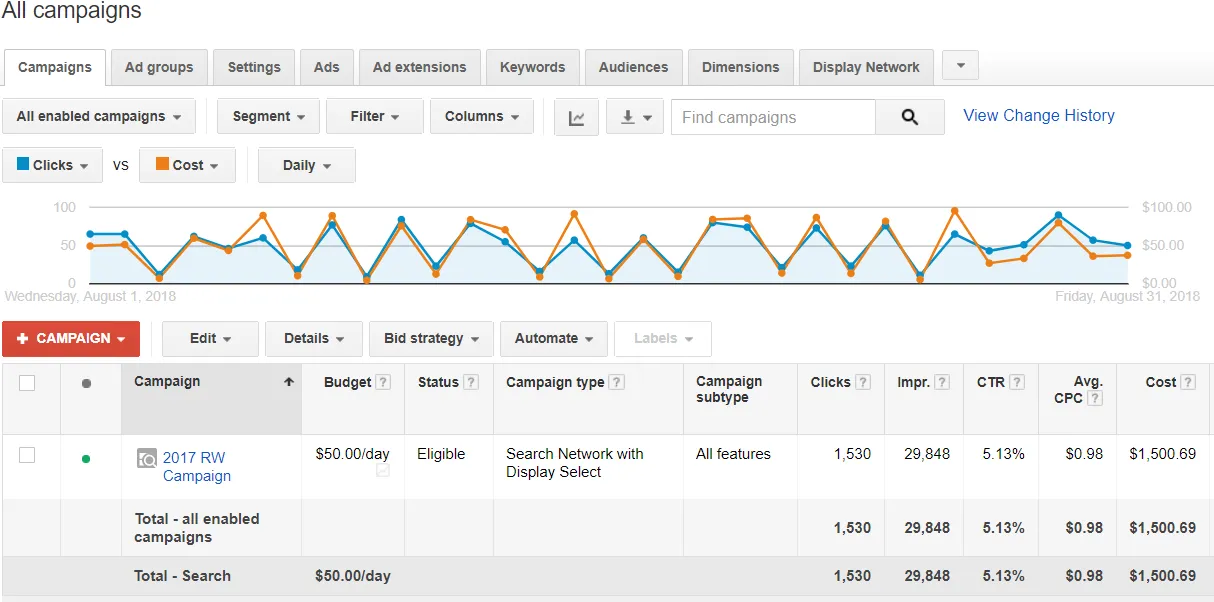
The Google Ads Dashboard is your control center, packed with tools and insights, all designed to optimize your campaigns. At first glance, it might seem overwhelming. However, with familiarity, its intuitive design shines through. The main navigation bar guides you to campaigns, settings, and insights. Each campaign type, be it Search or Display, has its own set of metrics and tools. The "Recommendations" tab offers tailored suggestions to enhance performance. Meanwhile, the 'Reports' section provides deep dives into analytics. Spend some time exploring, and soon, the dashboard will feel like the cockpit of your digital marketing spaceship, piloting you toward success.
A/B testing, sometimes known as split testing, is the unsung hero of effective Google Ads strategies. Imagine having two doors in front of you, and you're unsure which one will lead to success. A/B testing essentially lets you open both! By comparing two ad versions, uncovers which one resonates more with your audience. This method helps advertisers refine their ads, ensuring that their content, call-to-action, or design is as impactful as possible. Beyond just improving ad performance, A/B testing provides valuable insights into user preferences and behaviors. In the world of digital advertising, knowledge is power, and A/B testing is a powerful tool to wield.
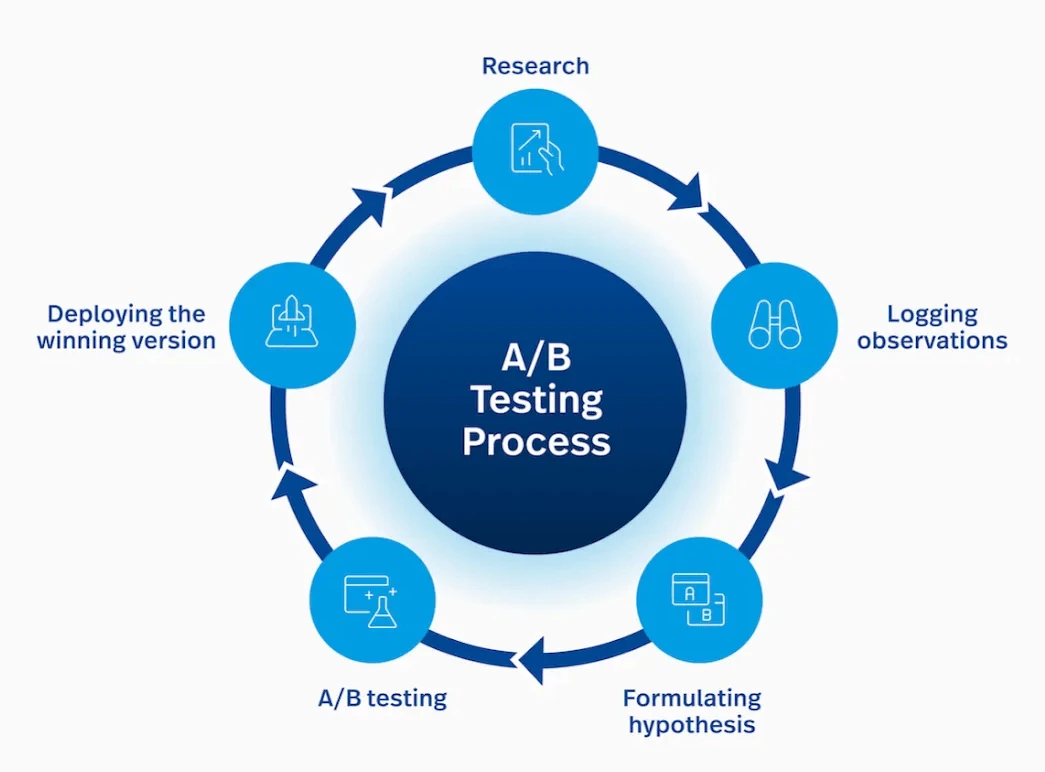
In the dynamic world of Google Ads, flexibility is key. Your initial bid might not always be the optimal one. Adjusting bids lets you capitalize on high-performing ads and withdraw from less effective ones. Think of it as fine-tuning your investment for maximum returns. Similarly, adjusting budgets ensures your campaigns don't run dry midway. It's like fueling a car for a long journey – you want to ensure it doesn't stop before the destination. Regularly reviewing and tweaking both bids and budgets not only optimizes campaign performance but also ensures you get the best value for every dollar spent. In Google Ads, a proactive approach always pays off!
Ever browsed a product online and then seen ads for it everywhere? That's remarketing in action! Google Ads' remarketing tool is a potent strategy that allows advertisers to target users who've previously interacted with their website or app. It's like a gentle nudge, reminding them of what they left behind. By displaying tailored ads based on their browsing patterns and past interactions, businesses can re-engage potential customers, increasing the chances of conversions. Remarketing isn't just about sales; it's about staying on top of the customer's mind, ensuring your brand remains memorable. In a crowded digital marketplace, that visibility is golden!
Diving into the world of Google Ads, one can't help but wonder: what's next? As AI and machine learning become more integrated, we can anticipate even more personalized ad targeting, ensuring that users see content most relevant to them. Voice search will reshape keyword strategies, pushing advertisers to think more conversationally. Additionally, the growth of augmented reality could revolutionize display ads, offering immersive experiences right from a user's device. While the exact trajectory remains uncertain, one thing's for sure: Google Ads will continue to evolve, keeping pace with technological advancements and changing consumer behaviors. Staying updated is the key to thriving in this dynamic landscape!
Mastering Google Ads isn't just about understanding the platform; it's about evolving with it. As the digital realm continues its rapid advancement, advertisers need to stay agile, adapting to new tools, trends, and user behaviors. Google Ads offers a robust and flexible environment to reach potential customers, but its true power lies in its adaptability. By staying informed, conducting regular tests, and optimizing campaigns, businesses can harness this tool's full potential. As the world of online advertising grows ever complex, remember: the essence of Google Ads is to connect, engage, and resonate with your audience, always.
1. How often should I review my Google Ads performance?
Regularly. Weekly reviews are ideal, but monthly deep dives are essential.
2. Are Google Ads suitable for small businesses?
Absolutely. With flexible budgets and targeted advertising, even small businesses can benefit.
3. How do I know if my ads are performing well?
Check metrics like high CTR, best conversion rate, and CPC against industry averages.
4. Can I do Google Ads myself, or should I hire an expert?
While it's possible to manage yourself, experts can provide insights and strategies you might miss.
5. How soon can I expect results from my campaign?
Results can be seen quickly, sometimes within a day. However, for a clear picture, allow at least a month.


